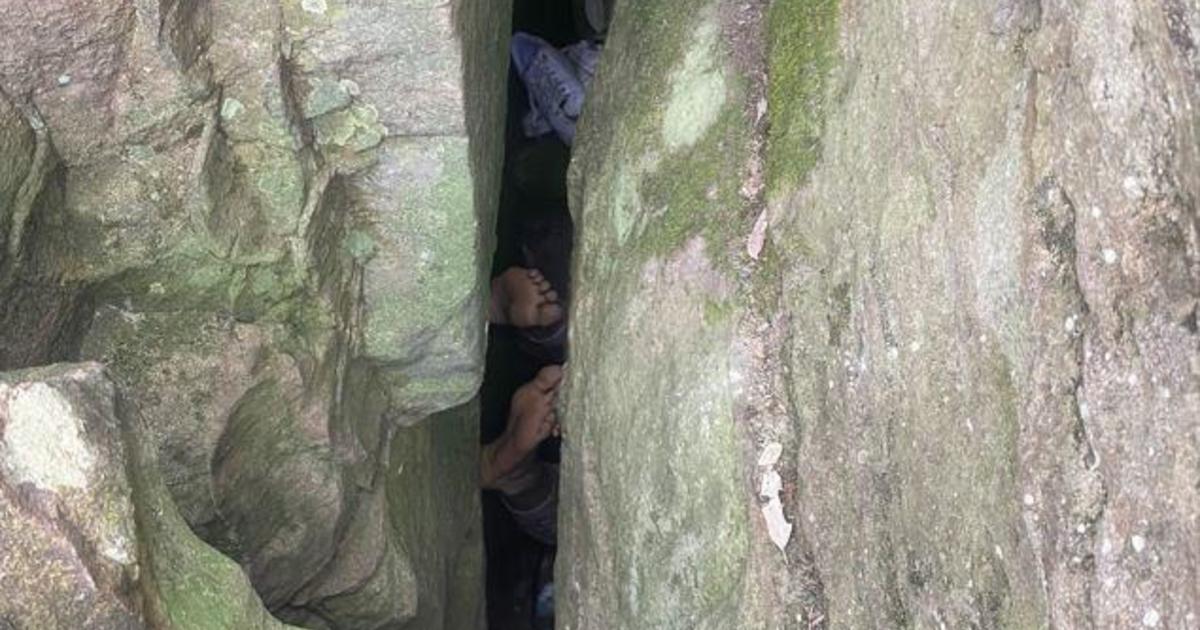The inherent risks associated with exploring natural environments are often underestimated, as highlighted by a recent incident involving Matilda Campbell in Australia’s Hunter Valley. Campbell’s attempt to retrieve her dropped phone led to a precarious situation, becoming wedged between boulders in a ten-foot-deep crevice. This incident underscores the importance of safety precautions when venturing into potentially hazardous areas, highlighting the need for careful consideration of personal safety and the potential for unexpected challenges during outdoor activities. The subsequent rescue operation, a testament to the skills and coordination of emergency services, also serves as a cautionary tale about the unpredictable nature of the natural world and the potential consequences of risky behavior. This narrative focuses on the various aspects surrounding this unusual rescue operation, from the initial accident to the eventual rescue and its broader implications for personal safety.
The Dramatic Rescue Operation
The Initial Incident and Emergency Response
Matilda Campbell’s adventure took an unexpected turn when she found herself trapped between two boulders after dropping her cell phone into a crevice approximately ten feet deep. This seemingly trivial mishap rapidly escalated into a significant emergency, leaving her suspended upside down for over an hour. Her friends, after exhausting their own rescue attempts, wisely contacted emergency services, initiating a complex and time-sensitive rescue operation. The prompt response of the New South Wales Ambulance service proved crucial, preventing what could have been a much more serious outcome. The incident serves as a stark reminder that even seemingly minor mishaps can have serious repercussions.
The Multi-Agency Rescue Effort
The complexity of the situation required a multi-disciplinary approach to rescue Ms. Campbell. A specialist rescue paramedic spearheaded the operation, collaborating with various teams including police, fire and rescue services. This collaboration showcased the expertise and coordinated teamwork that often characterises such difficult rescue scenarios. The process involved careful assessment of the situation, developing a safe and effective rescue plan and precise execution of the plan. The team had to overcome numerous challenges. They first had to safely create access to Ms. Campbell without causing further instability. Then, they utilized specialized equipment such as a mechanical winch to carefully move an extremely heavy boulder that weighed approximately 1,100 pounds, highlighting the magnitude of the challenge involved. Such situations emphasise the indispensable role of specialized equipment and expertise within emergency services. The effective collaboration across agencies reflects the seamless co-ordination achievable within modern emergency response strategies.
The Importance of Safety Precautions
Assessing Risk in Natural Environments
Campbell’s accident is a poignant reminder of the inherent risks involved in exploring rugged terrain. The unpredictability of nature requires careful planning and the awareness that seemingly innocuous situations can rapidly become dangerous. It underscores the importance of considering factors such as the terrain’s stability, personal fitness and available resources before embarking on any such adventures. A clear understanding of potential risks is crucial. Pre-planning such adventures, ensuring the accessibility of emergency services, notifying others of your location and informing them of planned route, and being prepared with appropriate personal protective gear are basic steps.
Avoiding Risky Behavior
Campbell’s decision to reach for her dropped phone while navigating an uneven rock formation highlights the tendency to take risks in seemingly trivial situations. This incident clearly demonstrated how a seemingly harmless attempt to recover a personal belonging can quickly lead to dangerous situations. This incident also provides crucial insights on avoiding dangerous actions by exercising cautious behavior in potentially hazardous environments. For instance, prioritizing personal safety and carefully evaluating risks involved in a given situation can prevent many needless accidents. While Ms. Campbell was unharmed, apart from minor cuts and scrapes, she emphasized learning from her mishap, planning to stay away from exploring precarious rock formations for some time to come.
Aftermath and Lessons Learned
Campbell’s Social Media Posts and Reflection
Following the ordeal, Ms. Campbell took to social media to express her gratitude toward those who helped rescue her, acknowledging the extensive effort put into the rescue operation. Her acknowledgment highlights the crucial role played by emergency rescue teams in situations such as these. Her posts also highlight her regret at the situation and serve as an important personal reflection on the need for increased awareness when exploring potentially dangerous areas. This showcases an understanding of personal responsibility as well as acknowledging the significant role of professional help in a situation of this nature. Her experience became a cautionary tale with a happy ending.
Implications for Emergency Services
This event places an important emphasis on the skill and resourcefulness needed in emergency services. The successful extraction demonstrated a high level of coordination, expertise and the significance of inter-agency collaboration. Specialist equipment and training were vital in overcoming obstacles and creating a safe rescue procedure. Furthermore, it underlines the resources and expertise required in highly challenging rescue operations and emphasises the significance of preparedness and collaboration across various agencies to achieve positive outcomes, as demonstrated by Ms. Campbell’s rescue.
Take Away Points
- Always assess the risks before venturing into potentially hazardous natural environments.
- Avoid risky behaviour, and prioritize personal safety.
- Be prepared for emergencies with appropriate equipment and planning.
- Appreciating the crucial role played by emergency services, in ensuring successful rescues.
- Reflect on your own decisions when engaged in exploring such environments and remember this case study.




